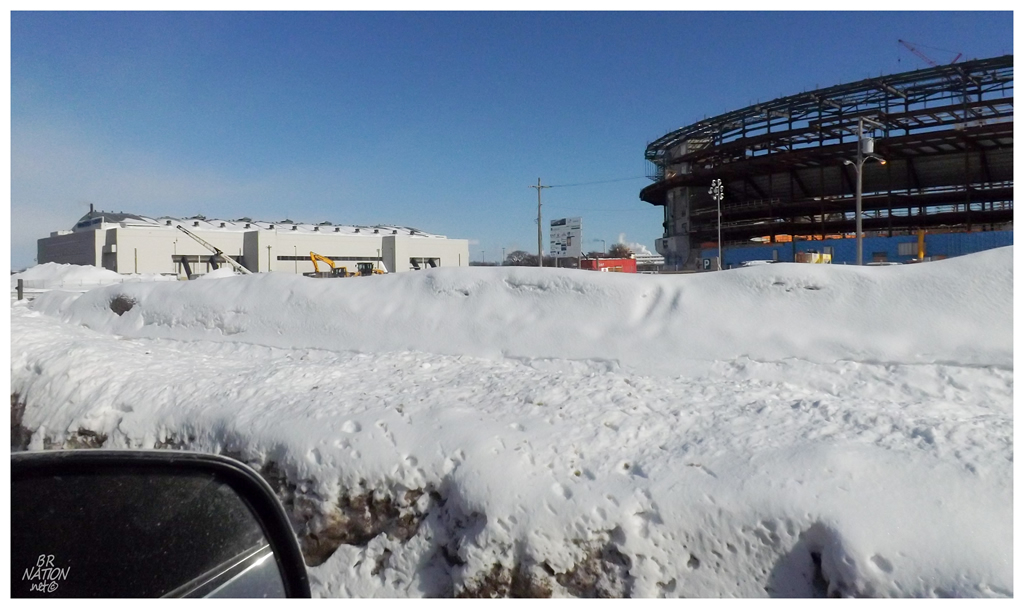
Quebec City isn't very large and what's there is concentrated along the St. Lawrence Seaway, therefore it doesn't take very long on the autoroute northbound to leave the skyscrapers and city environment behind. After only 10 minutes of driving from the hotel in Old Quebec, we now found ourselves on an industrial road flanked by a train line and repair shops on one side, with exposition grounds occupied by the New Quebec Amphitheater and the old home of the Quebec Nordiques on the other.
I didn't want to look forward to the trip being over during the preceding days, but for months I had been looking forward to this last stop of the trip.
The current home of the Quebec Remparts & the old home of the Quebec Nordiques - the Quebec Colisée.

^Compare the above view to the time of construction or the view until 1980.
Quebec City was home to one of the oldest hockey clubs in North America with the Quebec Hockey Club forming in the 1880s. Seeing as Quebec City was home to the world's first covered skating rink in 1851, this is understandable. A second "Quebec Skating Rink" was built in 1864 along the south side of Grand Allée, then a third skating rink was built on the north side of Grand Allée, but unfortunately too close to the Quebec Parliament (it was demolished in an expansion). Finally, a fourth "Quebec Skating Rink" was built at the entrance to the Plains of Abraham, the rolling fields that were to my left as I walked atop the walls of the Quebec Citadel. There's an awesome exterior picture of this fourth rink available courtesy of Musee McCord, as well as a great interior from Library and Archives Canada.
It was at this 4th Quebec Skating Rink that the Quebec Hockey Club, by then known as the Quebec Bulldogs, trained and played together, going on to win the 1911-12 and 1912-13 Stanley Cups with leadership from Joe Malone. These back-to-back championships allowed the club to convince Quebec City to build them a greater arena0, resulting in the construction of the 6000-seat Quebec Arena in Victoria Park. (Victoria Park being about halfway between Old Quebec and the Colisée. I had noticed the modern-day baseball stadium on the grounds as we drove by it on the autoroute).
The Bulldogs would play in the Quebec Arena for five seasons until they skipped town for Hamilton. The Quebec Aces and the Quebec Citadels would come along and fill the local need for hockey, playing in this Quebec Arena until it burned down in 1942. This led the city to install artificial ice and ice-making equipment in an amphitheater known as the Old Coliseum, but that "arena" was also destroyed by fire, this time in 1949.
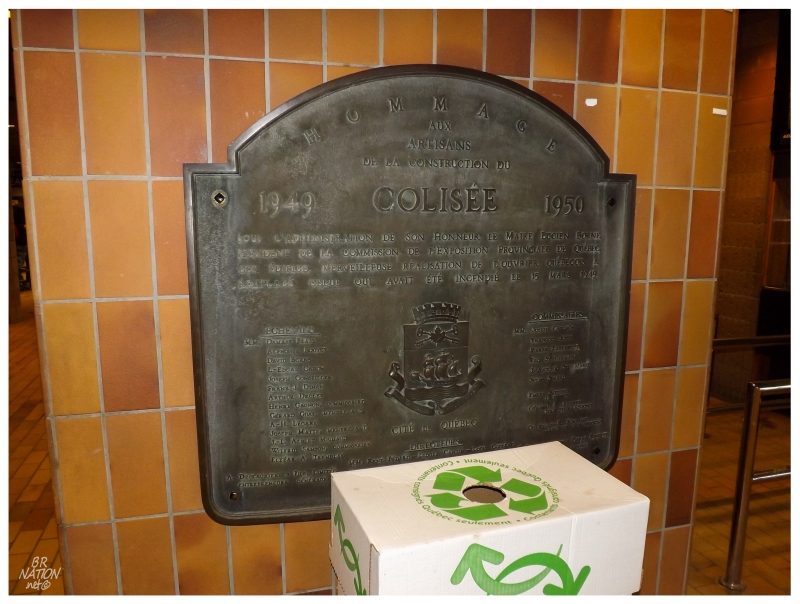
The day after the Old Coliseum burned down, Quebec City's mayor made a public appearance and declared that the amphitheater would be rebuilt. This was March 16th, 1949. By summertime, the construction workers were already constructing the steel structure of the famous rounded roof of the Colisée. The arena would open on December 15th, even as they didn't have all of the seats installed yet.
I can only imagine the Quebecers standing inside the arena on that day, unable to sit in assigned seats, while also skeptical with the German design of the Colisée, since Canada was unaccustomed to arenas without pillars at the time, the German's vaulted concrete roof removing supporting pillars and providing great sightlines for all.

It is said that the Colisée was built with such speed because Quebec City used to get a share of the provincial sales tax, the mayor took pride in seeing the job to completion & that a young Jean Béliveau was playing for the Quebec Citadels, a team currently homeless and playing games outside of the city.
Béliveau is the reason why after the 1949 Colisée filled to its 10,000-person capacity every night, that the rink became known as "The House That Jean Built". It would remain this way for only two years though as the Montreal Canadiens desperately wanted Béliveau, but Jean didn't want to leave Quebec City - so the Canadiens bought the entire QMHL and turned the league pro, since Béliveau had previously agreed to play for the Canadiens if he ever turned pro! This meant that he then had to go play for them.
Three years later, Béliveau would win the Art Ross, Hart & the Stanley Cup; as well as become the first ever hockey player to appear on the cover of Sports Illustrated.
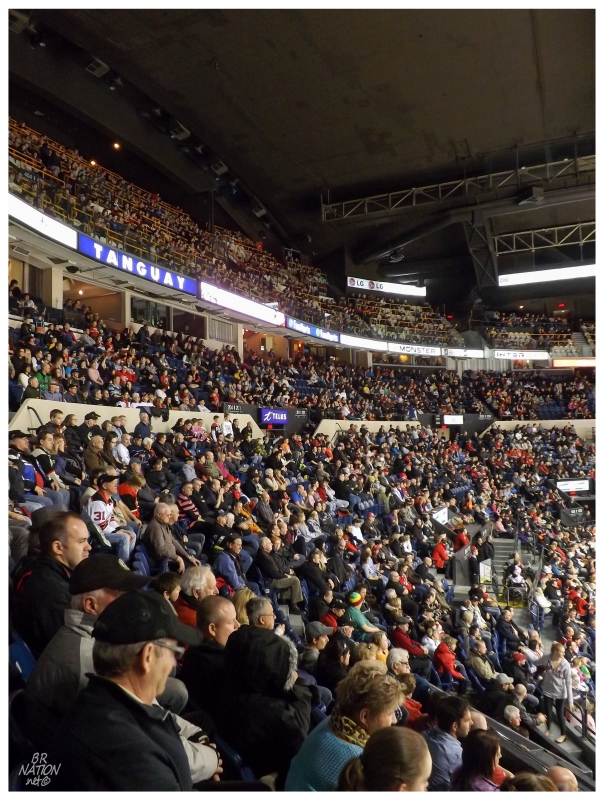
Jean Béliveau's old Quebec League would eventually fold, with the Quebec Aces going on to play in the AHL (the farm league of the NHL). In 1967, the Quebec team was purchased by the expansion Philadelphia Flyers, who would then have obviously-French players called up to play for them, players like Jean-Guy Gendron, Serge Bernier & Andre Lacroix.
The Flyers would move this team to Richmond Virginia in 1971, becoming the Richmond Robins. The Flyers would divest themselves entirely of Quebec City as they also owned the Quebec City Junior Aces, a team whom they sold to a group from Quebec City and were subsequently renamed the Remparts.
These Remparts would go on to win the Memorial Cup the very next season, led by a young, 130 goals in 62 games Guy Lafleur, who was filling the seats of the Colisée just like Jean Béliveau had before him.

The Quebec Nordiques would move in with the Remparts in 1972.
Originally slated to be the San Francisco Sharks at the outset of the World Hockey Association, the San Francisco funding collapsed and the team was scooped up by a group from Quebec City. With the Sharks no longer being an appropriate mascot, the group chose the Nordiques because of Quebec City's northern placement amongst teams in the league (Nord = north...Nord-iques).
The Nordiques would play in the WHA for 8 seasons, until they joined the NHL in 1980. After starting out their life in the NHL dreadfully, they signed defected Czech brothers Peter and Anton Stastny, who would then lead them to 7 consecutive playoff appearances, making it to the conference finals twice.
I only remember the Nordiques from the times where they were awful, attaining the league's worst record in 2 out of 3 years at the beginning of the 90s (one of these seasons being a whopping 12 win, 61 loss, 7 ties season!) After this, they corrected things by making Mats Sundin the first Euro ever selected first overall, taking Owen Nolan first overall the next year, and acquiring Peter Forsberg in that infamous trade of Eric Lindros where Lindros refused to play for the Nordiques. In Forsberg's Calder-winning rookie season, the Nordiques would have the best record in the Eastern Conference, but were eliminated by the eventual Stanley Cup winning New York Rangers.
The summer following that let down was also the time when there was so much talk about the Canadian Dollar and the inability of smaller market Canadian teams to survive. The Nordiques asked for a bailout, but when it wasn't granted, the owner stated that there was nothing left to do but sell them team to interests from Colorado. The Nordiques would move and become the Avalanche, who went on to win a Stanley Cup the very next year, along with 9 consecutive division titles.
As for the Remparts, they had trouble drawing fans when the Nordiques joined the NHL. They would play for 5 more years, until they didn't join the QMJHL season for 1985-86. The Remparts I was seeing today started out as the Beaufort Harfangs (Snow Owls) in 1990-91, then moved to the Colisée and became the Quebec Remparts in 1997 after the city no longer had NHL games to attend.
The Remparts won the Memorial Cup in 2006.
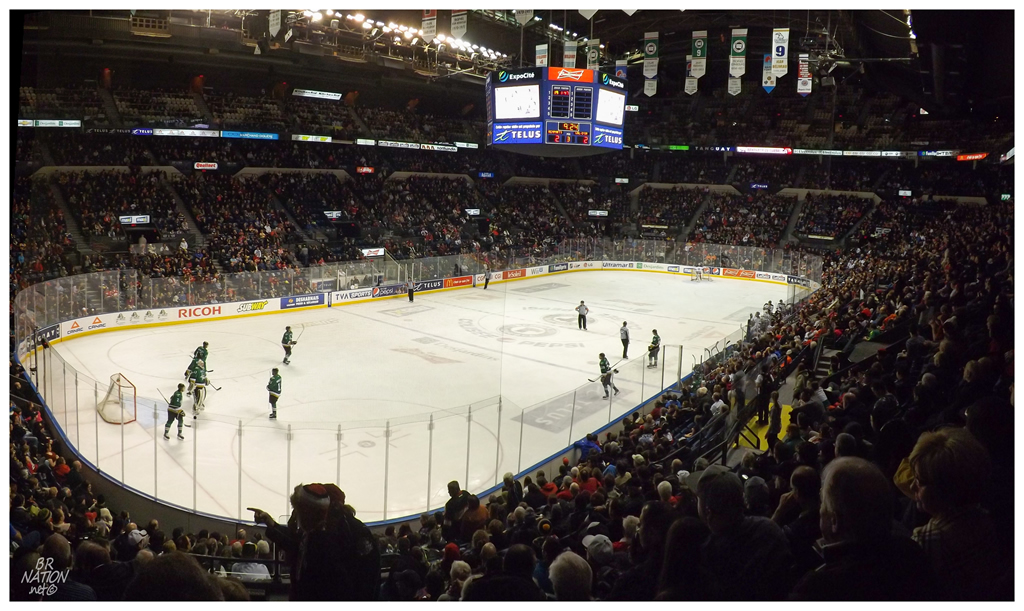
View from our seats.
Most of the games I've seen in Quebec have had attendance numbers somewhere in the two to five thousand range. The Remparts attract more than double that in hockey-hungry Quebec City, where the attendance is usually over 10,000; and for our game it was a whopping 14,486 (the Colisée's capacity went from 10,000 to 15,176 in an arena expansion when they joined the NHL). Whereas I'm normally used to being able to cherry pick my seats along the glass or in some unique & desirable section, I could only get 400-level seats in Quebec City. Looking for tickets long in advance of this trip was useless.
So even though I bought those 400-level tickets, I worked Kijiji and Google Translate'd my English into French as I corresponded with a Quebec City resident who was selling better tickets but didn't speak English herself. She wouldn't be in town during my short stay, so paying for the tickets sight unseen, she thankfully happened to live close enough to downtown that she could drop off the tickets in a nice Bon Match! envelope at the hotel.

Visiting the Colisée was another chance to see a home rink from the eighties, in the same manner as Nassau Coliseum, and in the same manner that I hope to find at the Hartford Whalers arena one day.
I wasn't sure if the dated patterns and colour schemes of the concession areas were because the arena hadn't changed, or if because of French style. That being said, the hallways and ticket areas were fairly modern in appearance (maybe they were a bit 90s'ish).
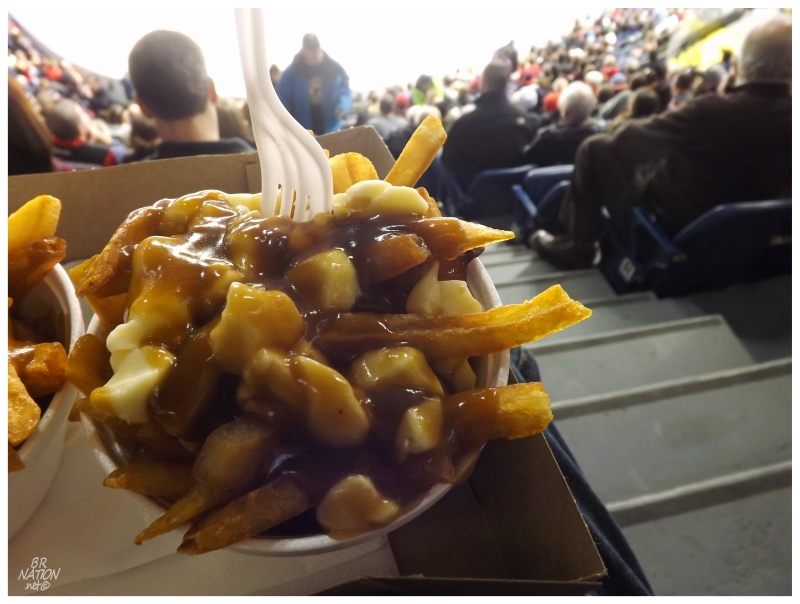
Speaking of the concession areas, hoo boy, the poutine I purchased from those Colisée employees. Thankfully I just had Chicoutimi's poutine yesterday, so I could put it above that one. And I think I might even have Quebec City's above Victoriaville as well.
This obviously raises the question of whether Drummondville is #1 because you always look back romantically on the past (Drummondville was my first Q arena poutine).
Clearly I need to attend an afternoon game in Drummondville & a night game in Quebec City in order to settle this pressing conundrum.

Ticket gates/Lobby
Going for a much needed walk after such gravy & cheese curd consumption, the Colisée felt similar to Nassau Coliseum and somewhat similar to Joe Louis. It clearly wasn't engineered by some firm studying walkability and amenity scores where everyone is herded carefully & methodically (like modern arenas). There were confusing sections in the Colisée; there were dead areas where you wondered if you were supposed to be there, and then you'd turn a corner and 50 French kids would be playing mini-sticks.
I couldn't help but smile at that section with all of the children playing hockey as they had taken up a space near the escalator. As I had to cut through the chaotic herds, they hollered indiscernible French and ran maniacally towards a single plastic puck taking great bounces. Nearing the escalator, I noticed the puck near my feet and the closest pack of them closing in, forcing me off course as to not experience the wrath of their plastic sticks on my shins and ankles. I felt like I had been dropped into a small dog park enclosure, where the hounds had no interest in me & only simple excitement in running around in their 2-foot lives while I towered above unnoticed.
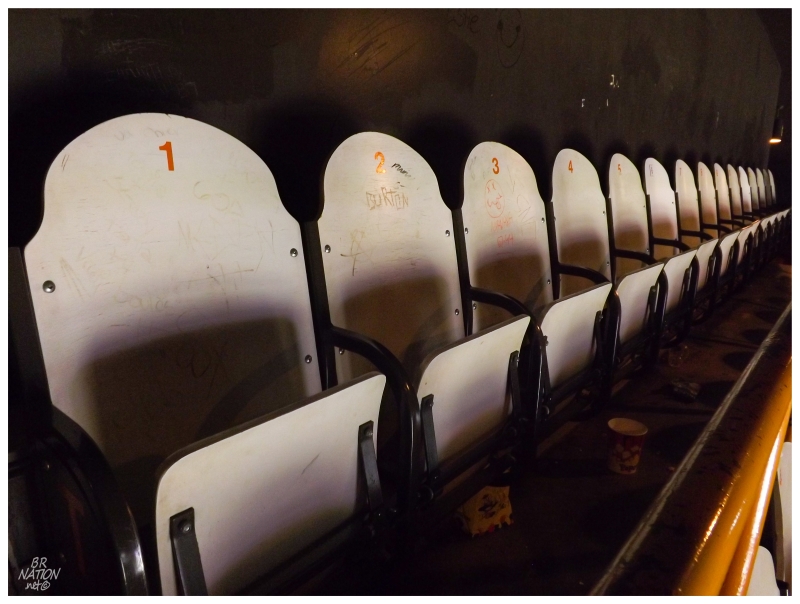
Leaving the mini-stick excitement behind, the escalator led up to the third level, where my motivation was to see if the steep angle existed here as it did at the Buffalo Auditorium. Surveying the view from the tickets I originally purchased, I then walked right to the top of the last row against the back wall, seats that hadn't seemed to change like the ones we had back on the first level.
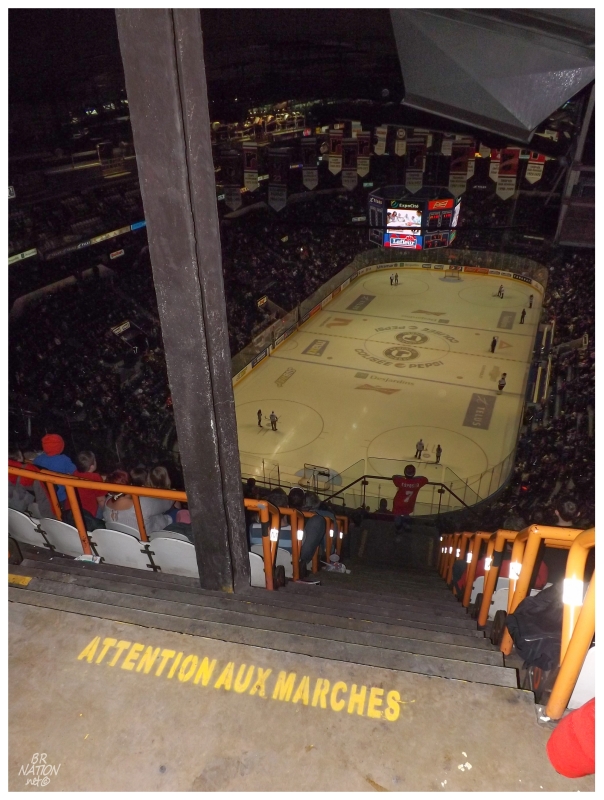
The same steep stairs were up here just like the Aud, where I again wondered how no one ever drunkenly fell to their death. The view couldn't be beat though, something you're not getting at a lot of modern arenas when you're forced to purchase cheap seats.
Seeing as I thought that I missed out on something at Nassau Coliseum by only sitting at our great seats, I insisted that we stay up here for a bit, the arena not entirely sold out and there being some emptiness around. The feeling was similar to what I remember in Buffalo and combines to form the memory of what I envision it was like to watch live hockey in the 70s or 80s.
As for the game, Quebec was playing Val-d'Or, which was the perfect way to end this trip since I couldn't pick a more desirable matchup if I tried (home arena included). This is because Quebec had highly-touted Buffalo prospect Mikhail Grigorenko & Val-d'Or had Red Wings' prospect, big Anthony Mantha. Grigorenko exciting me as I love watching foreigners (he's Russian) and Anthony Mantha is simply an imposing young man at 6'5" and 205 lbs., who also skates fluidly and has great goal scoring ability.
This top matchup in the arena that I wanted to see the most, the game was back and forth and went to overtime tied at 4, with Val-d'Or ending it in overtime. This was after three lead changes and Quebec racing back from a 4-2 deficit to tie the game in the last 2 minutes and 15 seconds.
It's unfortunate that the Remparts fans had to leave unhappy in the end.
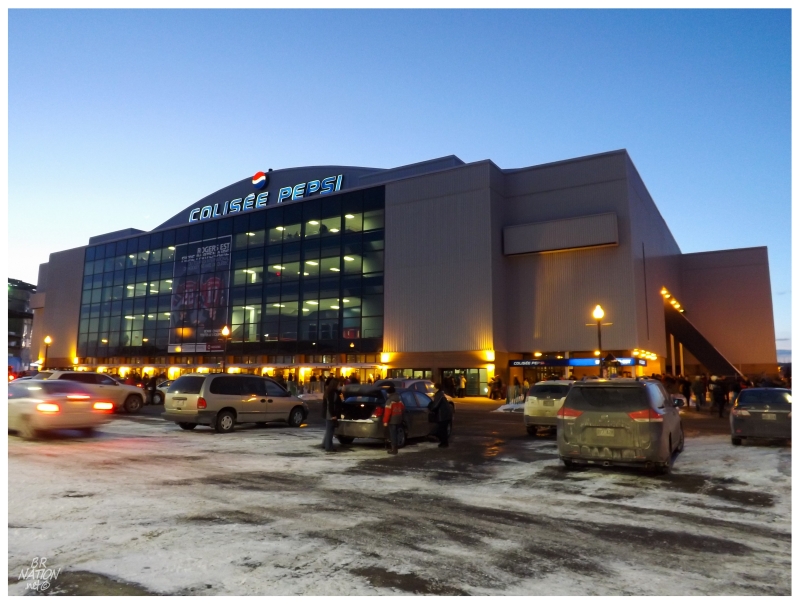
As for the Colisée, in a strong move towards acquiring an NHL team by Quebec City mayor Régis Labeaume, he has worked and planned for a new, NHL-calibre Quebec City arena for over half a decade now, the results being what you saw in the first picture of this update. Unfortunately, just recently he has publicly announced that he "vows" to demolish the old Colisée, stating that he too holds nostalgia for the old place, but that people will forget about the old Colisée within a game or two at the new rink.
In reading several articles about its planned demolition, there seems to be some interested parties with proposals to reuse the building, but the mayor has told them to hurry up and come forward with plans. Also, although I think the Olympics are a horrible investment for a city, the arena could survive if Quebec City commits to bidding on the Winter Olympics (Winter Olympics apparently require two large arenas for all of the skating events).
As always, I remain skeptical and therefore I am comforted by the fact that I saw the Colisée. In an age where corporations want to make money on construction contracts and box suites, old barns are getting squeezed out, or more correctly, have already been squeezed out for the most part. Seeing a game at the old Colisée was an opportunity to travel back in time, a window that will sadly close after the Remparts host the Memorial Cup in June 2015.
As for the end of the trip, since it was almost dark and I knew about the lack of dining options between here and Montreal, we went to some Chinese/Vietnamese place near where we parked the car. Located outside of downtown Quebec City, the menu was in French and the waitress couldn't even speak that bit of English that allows two people to work together. As a result, we ended up with mediocre Chinese dishes at expensive prices, my linguistic inadequacies leading me to pick safe choices.
The drive back to Montreal & the return of the rental car went smooth, even as I locked myself in a parking garage that charged by the day when I was only looking for a 30 minute place to take apart my bike outside the cold. Missing the bus to the airport, there were a few more pints consumed at some chain-style pub while watching the conclusion of the Oscars.
Eventually we'd make it to Trudeau Airport, sleep uncomfortably on benches for six hours, then board planes to Toronto & Halifax.
6 bike sessions, 4 hockey games, 5 skateparks, good weather and new Quebec city explorations all for a short haul air miles flight?
Not bad.